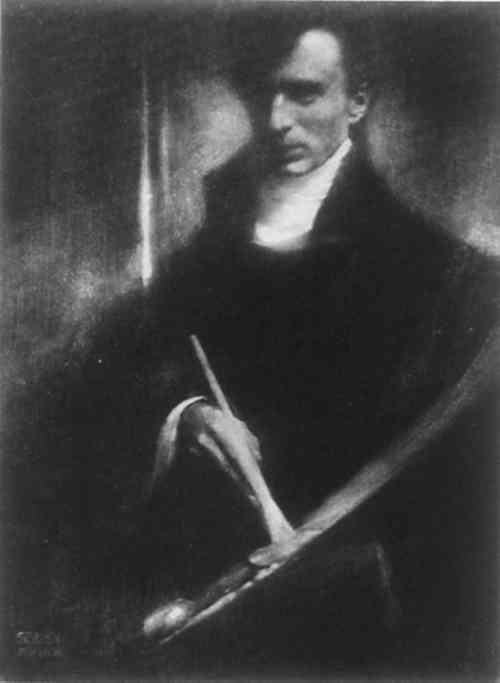ALFRED STIEGLITZ'S PALLADIUM PHOTOGRAPHS AND THEIR TREATMENT BY EDWARD STEICHENDOUGLAS G. SEVERSON
4 STEICHEN'S TREATMENTHaving survived a number of heart attacks, Alfred Stieglitz finally succumbed to a massive stroke on July 13, 1946. Georgia O'Keeffe had hastily returned from New Mexico and was at his side at the Doctors Hospital in New York when he died. She buried his ashes near the water at Lake George and then returned to Abiquiu until the end of November, perhaps to gather energy for the daunting task ahead: in 1937 she had been named Stieglitz's executrix. The estate included roughly 850 paintings, drawings, and sculptures, at least 2,000 photographs, and some 50,000 letters and papers, all of which were designated for donation to nonprofit institutions. To assist with the sorting and distribution of the works she engaged Doris Bry, who became indispensable as O'Keeffe's assistant and representative for the next 30 years. Bry is described by one O'Keeffe biographer as “meticulous, hardworking, and reliable; she had an excellent eye; most important, she was tough enough to represent her employer's interests in New York while O'Keeffe was in Abiquiu” (Eisler 1991, 481). According to Bry, the Stieglitz Collection was housed and sorted at An American Place over a period of three years. The work was spred throughout the closed gallery space during the winters when O'Keeffe was in town (Bry 1993–94). Selections were made for exhibitions at the Museum of Modern Art in 1947, with the assistance of James Sweeney, and at the Art Institute of Chicago in 1948, with the assistance of Daniel Catton Rich (O'Keeffe 1949). Edward Steichen (fig. 3), MOMA's new director of the Department of Photography, soon became involved as well. According to Bry, O'Keeffe felt that Steichen was “about the only photographer around who knew the old palladium and platinum printing processes as Stieglitz knew them, and who also had enough regard for Stieglitz that he would take on such a chore” (Bry 1993–94).
Steichen had first met Stieglitz at the urging of Clarence White at the New York Camera Club in 1900. They spent only an hour together before Steichen was off to Paris, but it was enough to establish a rapport (Steichen 1963). When Steichen returned to New York in 1902, he opened a portrait studio at 291 Fifth Avenue, which soon became the legendary Little Galleries of the Photo-Secession. Stieglitz is widely credited with introducing to the American public the work of Rodin, Matisse, C�zanne, Rousseau, Picasso, and Toulouse-Lautrec. Often lost in the shuffle is the fact that Doris Bry's recollection is that Steichen came to An American Place sometime during the sorting and distribution process, probably during the winter of 1949. They focused their attention on the palladium prints, which, according to Bry, were “very, very yellow and gave you a feeling of disturbance” (Bry 1993–94). Arrangements were made for Steichen to treat them, and “they came back looking clear and fresh … newly made again” (Bry 1993–94). As it generally fell to Bry to transport the prints to and from Steichen for treatment, she recalls asking him a number of times to specify the procedure, but he always remained secretive. She is not at all surprised that no written record of the treatment method seems to exist. Fortunately she was a methodical record keeper and placed the notation “Treated by Steichen” on the original mats of all treated pictures, along with treatment dates, which range from May 1946 to June 1950. While not every collection has been examined, 232 treated photographs have so far been found, listed below:
Although a concerted effort has been made to discern patterns among these photographs, many factors make this attempt exceedingly difficult. An unmanipulated platinum or palladium
Add to these factors Stieglitz's known history as a great experimenter and technical pioneer, and the absence of specific records or printing procedures, and the challenges in making positive process identifications become evident. Stieglitz's copious correspondence with his peers provides tantalizing but usually inconclusive or contradictory clues about his techniques. Given the uncertainties of the palladium process itself, the manner in which it was manipulated by Stieglitz, and the contradictions of the written record, any assessment of the condition of the treated prints before and after treatment must be imprecise and largely hypothetical. Still, their assessment must be attempted if responsible decisions are to be made in caring for these photographs. |
